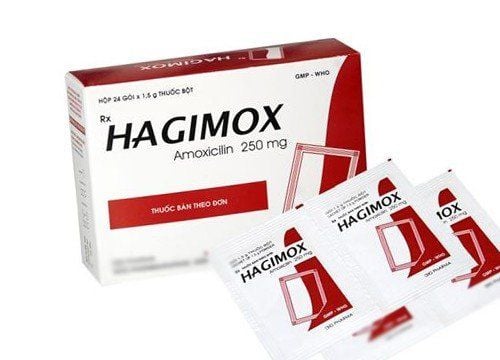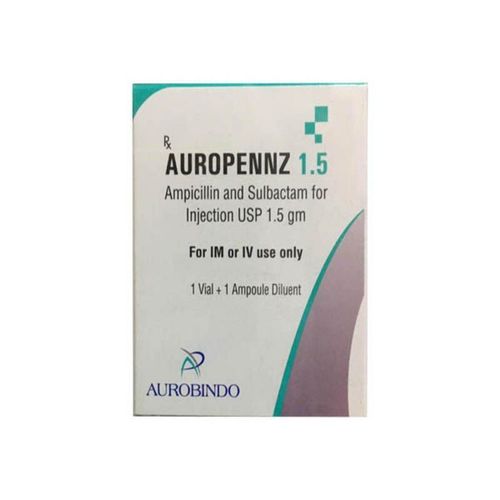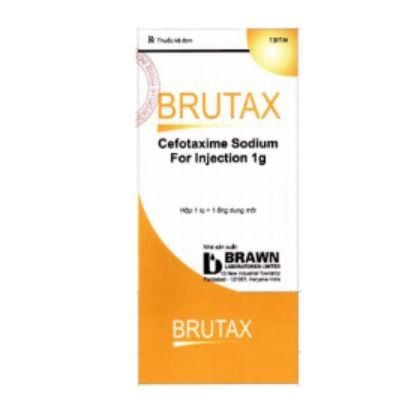This is an automatically translated article.
Quafacip is an antibiotic of the Quinolone group, used in cases of infections caused by susceptible bacteria for which the use of antibiotics with fewer side effects is not indicated. So how should Quafacip be used?
1. What are the effects of Quafacip?
Quafacip drug has the main ingredient is Ciprofloxacin (in the form of Ciprofloxacin hydrochloride) with the content of 500mg, prepared in the form of film-coated tablets. Ciprofloxacin is a semi-synthetic, broad-spectrum antibiotic that belongs to the Quinolone group or sometimes called the DNA gyrase inhibitors. The drug has an antibacterial effect by inhibiting the enzyme DNA gyrase, thereby preventing the replication of chromosomes that make bacteria unable to reproduce quickly. Because the mechanism of action of this drug is very specific, it is not resistant to parallel resistance to other antibiotics that do not belong to the group of gyrase inhibitors. Therefore, Ciprofloxacin is effective against bacteria that are resistant to other antibiotics such as Aminoglycosides, Penicillin group antibiotics, Cephalosporins, Tetracycline...
Sensitive drugs on many different types of bacteria , including both gram-negative and gram-positive bacteria.
2. Indications and contraindications of Quafacip
Indications: Quafacip is indicated for use in the following cases:
Treatment of diseases such as urinary tract infections, osteomyelitis, prostatitis, severe bacterial enteritis, bacteremia caused by caused by susceptible bacteria. Treatment of soft tissue infections, gynecological infections, bile duct infections, meningitis. For prophylaxis in meningococcal disease and bacterial infections in immunocompromised individuals. Contraindications: Quafacip is contraindicated in the following cases:
Quafacip is not indicated in patients with hypersensitivity to Ciprofloxacin, excipients or other quinolones. Ciprofloxacin is not contraindicated in children, growing adolescents, and people under 18 years of age. Pregnant or lactating women, as there is currently no information on the safety of the drug in this patient population. History of tendon rupture or severe muscle disease while taking quinolones.
3. Dosage and usage of the drug Quafacip
3.1 How to use Quafacip is in the form of film-coated tablets, so it should be taken orally. This medicine should be taken with plenty of water and you need to take it about 2 hours after a meal.
3.2 Dosage Depending on the disease case of each person, the drug is used in different doses. Here are the dosages that you can refer to.
Mild to moderate infections: Take Quafacip from 250 to 500mg/time, 2 times a day. Severe infections and complicated infections: Use Quafacip at a dose of 750mg/time, twice a day. Use 5 from 10 days. Renal Impairment: Dosage should be reduced depending on the degree of renal impairment. For individuals with a creatinine clearance of 30 - 50 mL/min, a dose of 250 to 500 mg every 12 hours should be taken. Renal failure with creatinine clearance of 5 - 29 mL/min should take 250 - 500 mg/18 hours. If the patient requires dialysis, 250 to 500 mg/24 hours. The duration of taking Quafacip is from 5 to 14 days, depending on each specific case.
3.3. Overdose or missed dose Overdose: If you have taken a dose that is too large than prescribed, you need to go to the hospital so that it can be considered to apply supportive measures such as vomiting, gastric lavage. stomach, taking diuretics. Patients with overdose should be closely monitored and treated supportively. Missed dose: If you miss a dose, take this medicine as soon as possible. However, if the missed dose is close to the next dose, skip the missed dose and take the next dose at the scheduled time. Remember to limit missed doses, as this increases the risk of drug resistance and reduces the effectiveness of antibiotics.
4. Possible side effects when taking Quafacip
When using Quafacip, you may experience unwanted effects, including:
Common side effects: Nausea and vomiting, abdominal pain and diarrhea; Temporarily increased levels of transaminases. Uncommon side effects: Headache, possibly drug-induced fever, leukocytosis, anemia and thrombocytopenia causing bleeding; Fast heart beat ; Rash and upper pruritus; Superficial phlebitis; Pain in the joints and swelling of the joints. Rare side effects: Anaphylactic or anaphylactoid reactions; Hemolytic anemia , causing leukocytosis, thrombocytosis, changes in the level of prothrombin in the blood; Insomnia, depression, and self-harming or suicidal behaviors; Visual disturbances; dysfunction of hearing, taste and smell; Pseudomembranous colitis ... When experiencing side effects of the above drug should stop using and notify the doctor or if serious, need to go to the nearest medical facility for timely treatment.
5. Notes when using Quafacip
Before using the drug, you should inform your doctor about your history of allergies and other medical conditions. So that the doctor can consider the appropriate medication.
When using this antibiotic or any other drug, you need to follow the doctor's instructions, do not change the dose on your own, because it causes resistance or may increase the side effects of the drug. .
Quafacip should be used with caution in people with a history of seizures or central nervous system dysfunction, people with impaired liver or kidney function, people with glucose 6 phosphate dehydrogenase (G6PD) deficiency. , people with myasthenia gravis , because the use of the drug can aggravate the above symptoms.
Ability to drive and use machines: Use Quafacip with caution when driving and operating machinery, as this medicine may cause dizziness or lightheadedness.
Pregnancy: Quafacip should only be used in pregnant women in severe infections that are life-threatening when there is no other safe alternative antibiotic, then it is necessary to use the group. fluoroquinolone antibiotics.
Lactation: Ciprofloxacin should not be administered to a nursing mother, as this drug may accumulate in breast milk and may reach concentrations harmful to the infant. If the mother must take Ciprofloxacin, she should stop breastfeeding while taking the drug.
You should limit direct exposure to the sun when using or need to take protective measures and use appropriate sunscreen when using the drug.
Storage: Quafacip should be stored in sealed packaging, in a dry place, at a temperature not exceeding 30 degrees Celsius, protected from light. Keep out of reach of children.
6. Quafacip drug interactions
Some other drugs when used concurrently can cause interactions with Quafacip drugs include:
Concurrent use of non-steroidal anti-inflammatory drugs (Ibuprofen, aspirin, Indomethacin, ...) may increase the risk side effects of Ciprofloxacin. Concomitant administration of antacids containing aluminum and magnesium will decrease serum concentrations and reduce the bioavailability of ciprofloxacin. Quafacip should not be taken at the same time with other stomach antacids that need to be taken 2 to 4 hours apart. The absorption of the antibiotic Ciprofloxacin can be reduced by half if it is used concomitantly with some cytotoxic drugs such as Cyclophosphamide, Vincristin, Doxorubicin, Cytosin Arabinoside, Mitozantrone. Didanosine can cause the blood level of Ciprofloxacin to be significantly reduced. Ciprofloxacin should be taken 2 hours before taking Didanosine or after 6 hours. Iron-containing preparations or zinc-containing preparations significantly reduce the intestinal absorption of Ciprofloxacin. Avoid concurrent administration of the antibiotic Ciprofloxacin with iron or zinc-containing products and should be taken as far apart as possible. Sucralfate reduces the absorption of Ciprofloxacin: Antibiotics should be given 2 to 6 hours before taking Sucralfate. Ciprofloxacin increases serum theophylline concentrations when administered concomitantly. Blood levels of theophylline should be checked and dose reductions may sometimes be necessary. Probenecid has the effect of reducing the glomerular filtration rate and reducing the renal tubular secretion of the antibiotic Ciprofloxacin, thereby reducing the urinary excretion of drugs, increasing side effects. Ciprofloxacin increases the activity of the anticoagulant Warfarin when used in combination. Blood prothrombin levels should be regularly checked and the dose of anticoagulants adjusted occasionally. Quafacip antibiotic is a drug that is used under the direction of a doctor. Patients should not arbitrarily use to avoid the risk of harm to the body and may increase the risk of antibiotic resistance.













